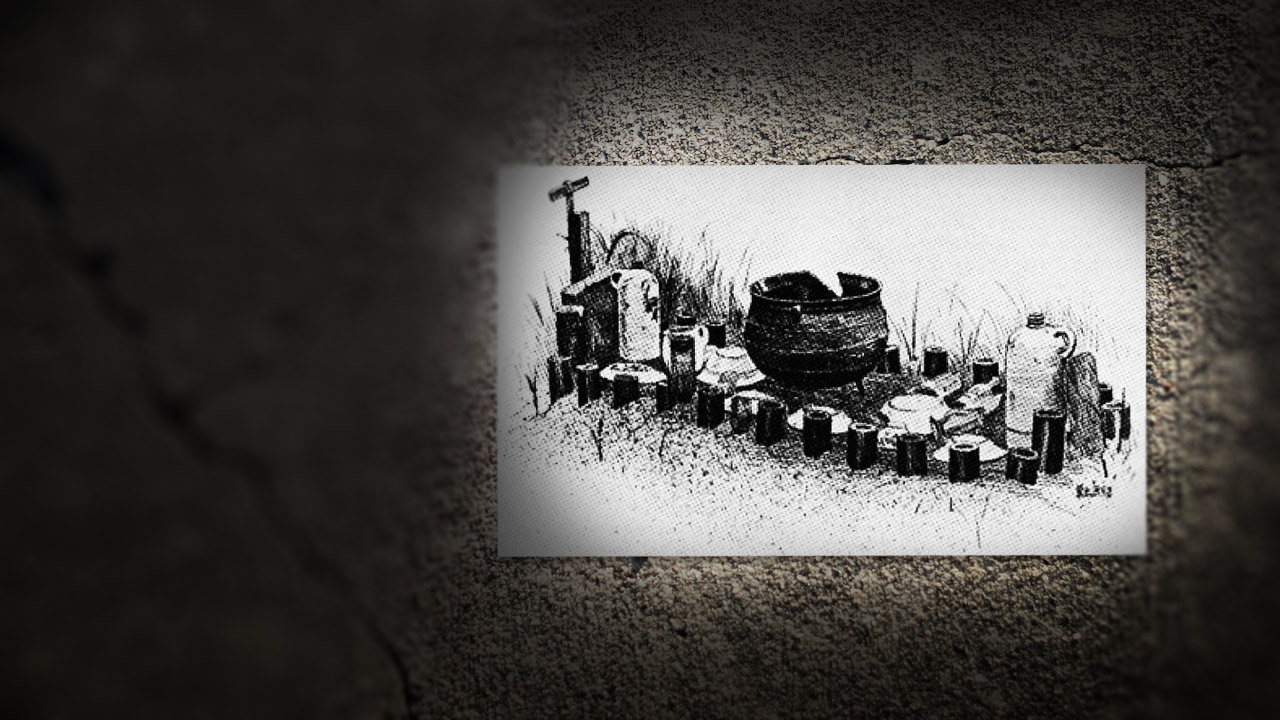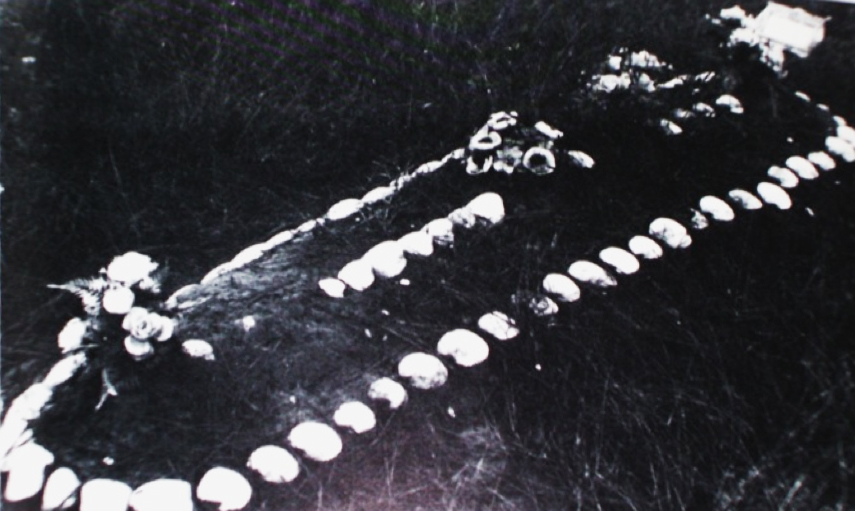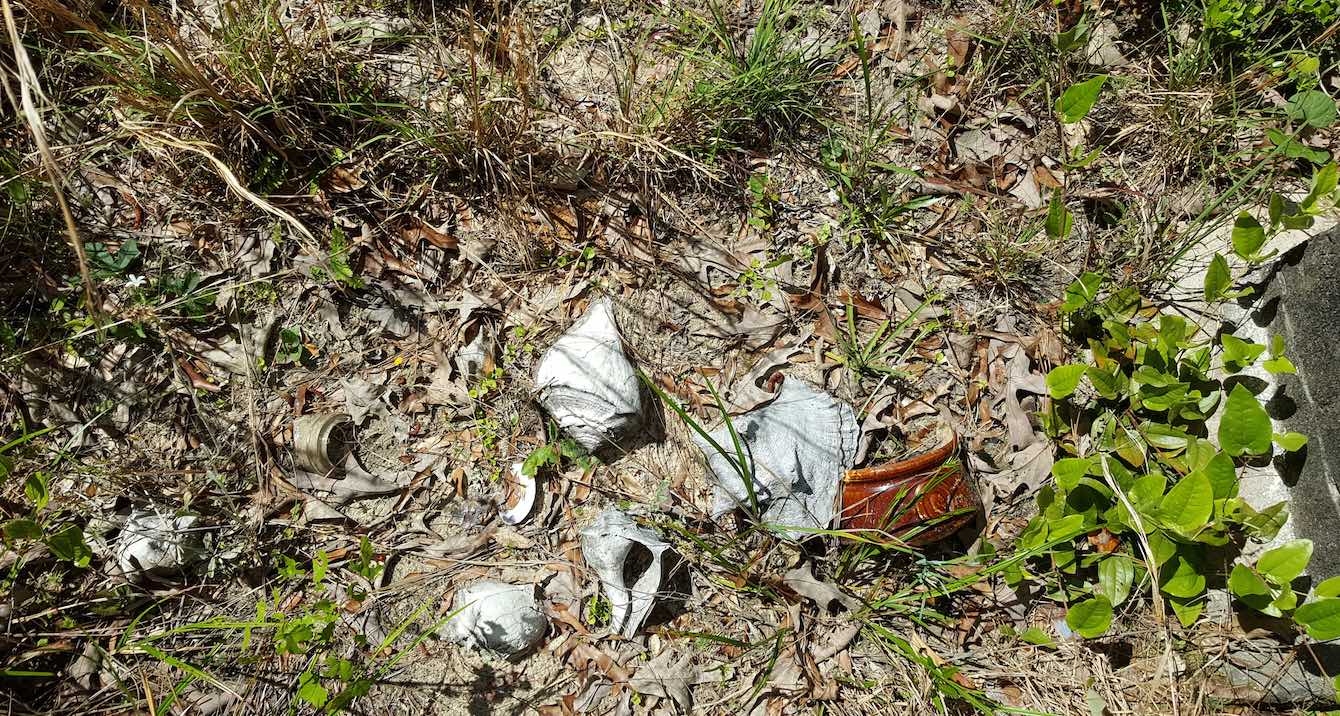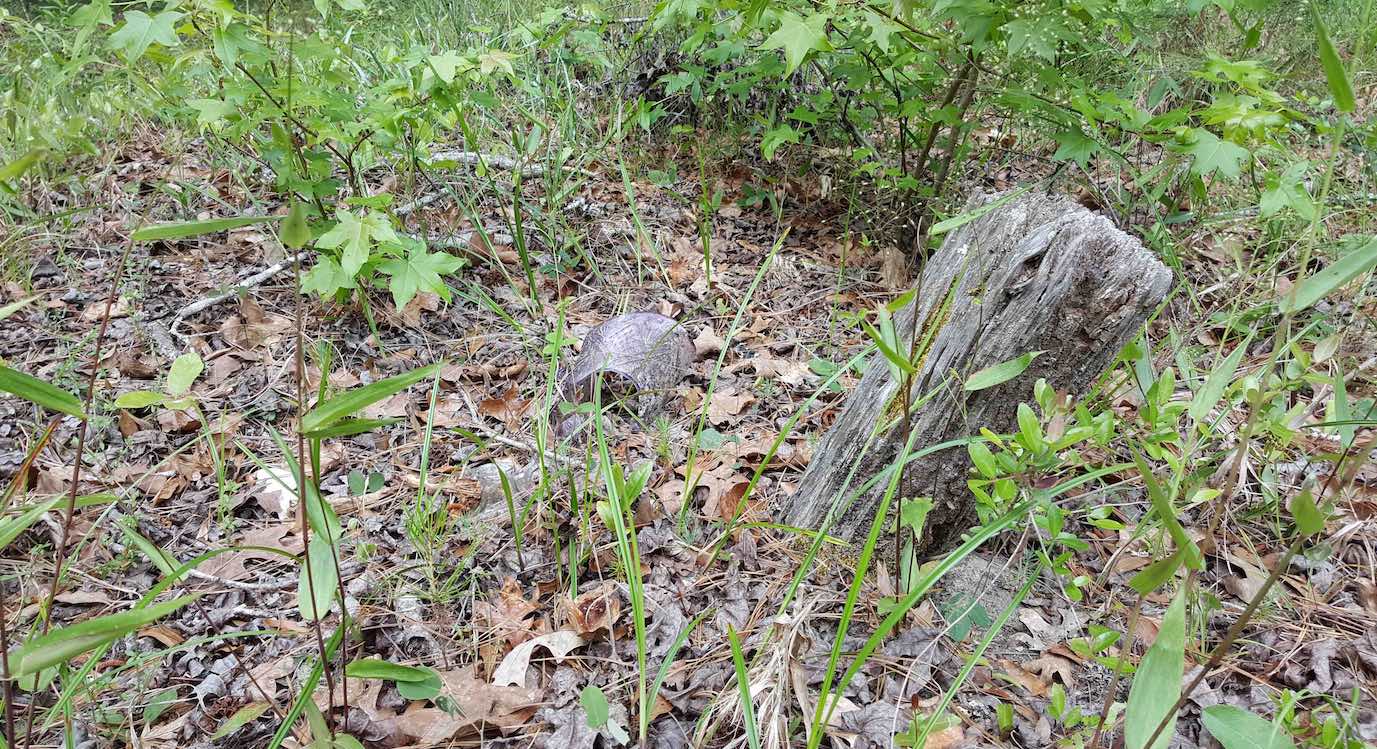Bellefield/Marietta or Friendfield Cemetery, known as Marietta, is located along the border of the former Bellefield Plantation, close to Marietta Plantation.
Bellefield and Marietta were rice plantations, dependent upon the labor of enslaved Africans. Enslaved people interred their loved ones at Marietta Cemetery and at others on the Hobcaw property.
After emancipation, African Americans continued to bury their dead here, well into the twentieth century.
As shown in this 1830 drawing of the grave of a Congo chieftain, West Africans decorated graves with personal items and objects used by the deceased just before death, marking the graves as sites of passage and contact with the spirit world.
This custom is seen among many cultural groups, but is most strongly linked to members of the Bakongo culture.
Many of the burial sites at Marietta are decorated with shells, glassware, cups and bowls, reflecting the West African practice of grave decoration and its expression in the New World over centuries of interpretation and adaptation.

Decorative materials placed upon graves are called grave goods. In this photograph taken in an African-American cemetery in South Carolina in 1975, seashells adorn a grave, giving it a striking resemblance to the West African burial site pictured in the previous frame.

In the Bakongo cosmology the color white, evident in ceramics, shells, jugs, mirrors and pebbles used as grave goods, is associated with water and the world of the dead. Shells adorn this Marietta grave.

According to Bakongo spiritual beliefs, the deceased cross a river into the spirit world to join their ancestors. The use of glassware and ceramics - broken and whole - is another West African, and largely Bakongo, tradition.
This grave in Marietta Cemetery is decorated with a broken glass pitcher.

It is believed that these items were broken in order to “kill” them so that they could accompany their owners to the land of the spirits.
These burial practices were sustained as cultural expressions of enslaved Africans in the New World, up to a third of whom came from the Kongo region. Unable to import material goods from their homeland, they brought with them a complex cosmology.
Enslaved laborers newly arriving in the Americas from Kongo continued to shape material culture in accordance with beliefs and practices learned in their homeland before capture. Later generations born on plantations in the Americas learned these traditions from their elders and continued to develop and shape those beliefs and practices in new ways.
Christopher C. Fennell, Kongo and the Archaeology of Early African America in Kongo Across the Waters
The process by which people exchange cultural ideas and ways of putting those ideas together is known as creolization. In this photograph taken in the South Carolina Lowcountry in 1941, a clock decorates the grave of an African American, evidence of a blending of African burial practice and European material culture.

Originally the term creolization was used by linguists to describe what occurs when languages meet; people borrow words and the ways words are put together, allowing languages to intersect with one another and transform into a “creolized” language. Archaeologists, anthropologists, and historians have come to apply the term creolization to lifeways and material culture.
